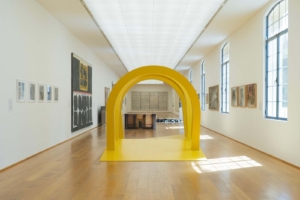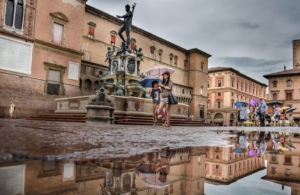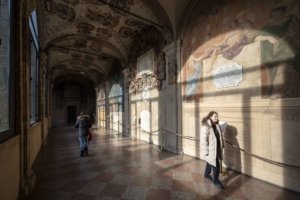Bologna's Neptune fountain: all you have to know about the giant
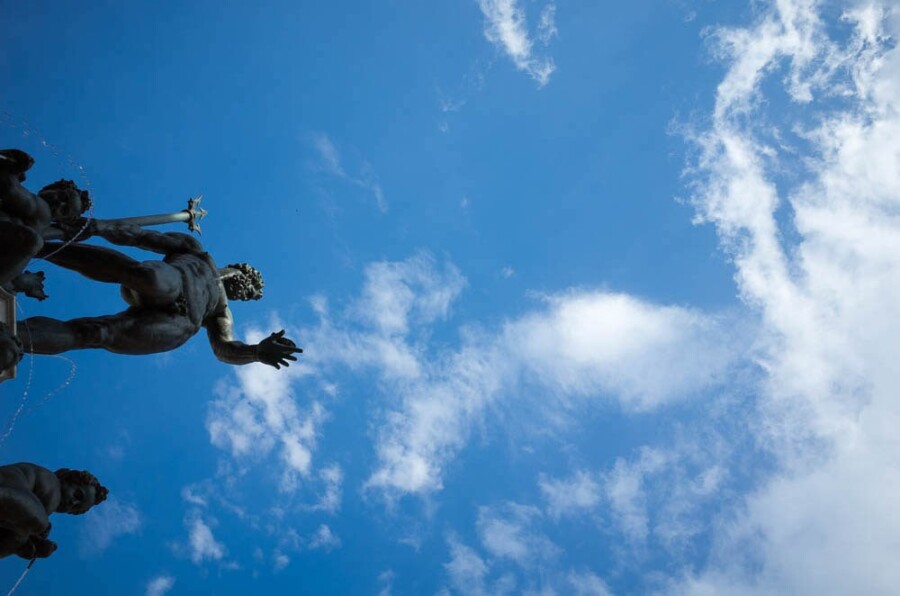
The Neptune Fountain in Bologna is one of the most iconic monuments in the city.
Located just off Piazza Maggiore, this monumental statue was built in the 16th century and has inspired artists, car designers, and generations of locals.
From its political symbolism to a visual illusion known as the “stone of shame”, here’s everything you need to know about this majestic fountain—more than you’ll find in your Lonely Planet.
Why isn't Neptune in the center of Piazza Maggiore?
Originally, the Neptune Fountain was intended to stand in the center of Piazza Maggiore, Bologna’s main square. But in the 1500s, Piazza Maggiore was a lively open-air food market—noisy, crowded, and full of vendors.
The central platform of the square, known as the Crescentone, was sometimes used for events, sports, and even naval battles with temporary pools. Today, it hosts outdoor cinemas and public gatherings.
Because of the chaos and constant activity, the square was deemed unsuitable to host the statue.
Instead, Neptune found his permanent home just a few meters away, in Piazza del Nettuno, with all the attention focused on him.
Discover more about Bologna's food markets that once filled Piazza Maggiore.
Neptune symbolizes papal power
From the 16th to the 19th century, Bologna was under papal rule. Pope Pius IV, elected in 1563, wanted to affirm his authority over the city. To do so, he commissioned a new public monument: a statue of Neptune, god of the seas.
With one hand, calming the waves, Neptune represents the Pope's ability to bring order and control. The water beneath him symbolizes the people of Bologna. In this way, the fountain served as a political metaphor:
As Neptune rules the sea, so the Pope rules the world.
The design was entrusted to architect Tommaso Laureti, while the sculpture was created by the Flemish artist Giambologna, who would later become one of the great masters of Mannerist sculpture.
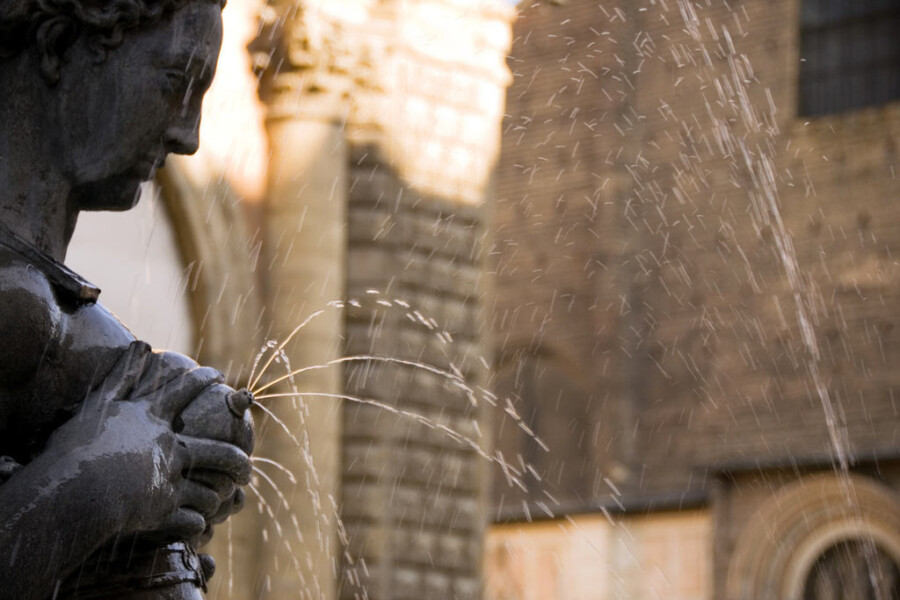
The stone of shame: an optical illusion by Giambologna
Giambologna was known for his artistic creativity and subtle defiance. While the Church imposed strict rules on artistic nudity, the sculptor found a clever workaround.
He designed the statue so that from a specific viewpoint, Neptune would appear even more “powerful” in a masculine sense. This spot, marked by a darker stone on the pavement behind the statue, is called the “Pietra della Vergogna” or “Stone of Shame”.
From this angle, Neptune’s outstretched thumb lines up with his groin, creating an unexpected—and controversial—visual effect.
Neptune’s trident and the Maserati logo
Not many know that Maserati’s famous trident logo was inspired by this very statue. In 1926, the luxury car company was founded in Bologna, in a small garage near the Basilica of Santo Stefano.
One of the Maserati brothers, Mario, who was an artist, took inspiration from the Neptune Fountain for the logo. He reproduced the trident exactly, giving the brand a powerful and elegant symbol that still appears on all Maserati cars today.
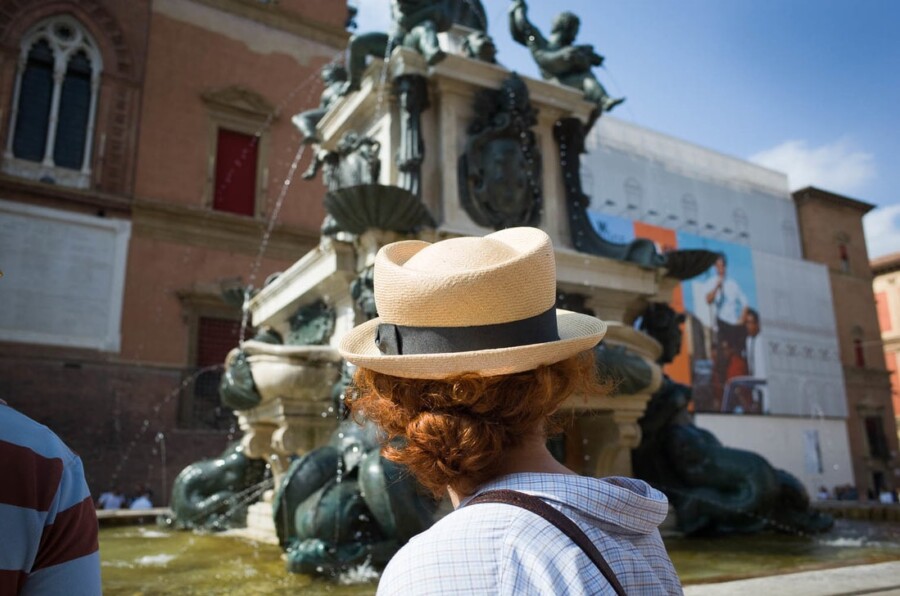
There’s more than one Neptune in the world
Like the famous garden gnome from Amélie, Bologna’s Neptune has traveled far and wide—at least in replica form.
There are three official copies of the statue around the world:
-
Brussels, Belgium: near the birthplace of Giambologna.
-
Batumi, Georgia: a golden version of Neptune looks out over the Black Sea.
-
California, USA: on the beach between Long Beach and San Diego, a replica watches over the Pacific Ocean.
Wherever he is, Neptune continues to symbolize power, elegance, and Bologna’s artistic heritage.
Final thoughts
The Neptune Fountain is more than just a photo spot—it's a powerful blend of politics, mythology, art, and local pride.
Whether you're visiting Bologna for the first time or rediscovering its treasures, take a moment to stand before Neptune and see how much history is carved in stone.
